“Nobody but poor wretches in the streets”
Samuel Pepys writing of The Plague in September 1665
At 1.3 billion, China is home to 20% of the world’s population. A toxic combination of chaotic urbanization, poor housing, dramatic climate change and lack of effective disease control and prevention has given rise to a string of new-mutated and deeply significant viral diseases, all evident since 2003. These include Severe Acute Respiratory Syndrome (SARS), two highly pathogenic avian influenzas (H5N1 and H7N9), Severe Fever with Thrombocytopenia Syndrome (SFTS) – and now a further vile mutant, a betacoronavirus, COVID-19, which bears the grim promise of outperforming The Black Death but on a global scale. Obviously, the financial and societal fall-out is incomputable.
We Brits live on an overly crowded but relatively well-off island, and have the advantage of a reasonably effective health service. On a day to day basis, underfunded and dedicated hospital staff have managed to cope with an ever-burgeoning workload – just.
The sudden-looming threat of COVID-19 has spread much dismay if not a degree of panic among the political class, which is well aware of the fragility of the NHS due to years of ill-conceived governmental financial and technological constraints.
Cobbling together an urgent and coherent national plan of campaign against a rampant COVID-19 would be a serious challenge for any unprepared and largely ignorant regime. Despite vapid promises, the 2003 SARS pandemic did not give rise to a Coronavirus vaccine: this despite the overall death rate of 11% (55% of cases over 65).
Probable effectual treatments do exist – certainly the re-purposed, safe and trusty anti-malarials chloroquine and hydroxychloroquine (now unavailable to the public) and perhaps the anti-Ebola remdesivir which is now being trialled in China and Germany and has been made available to members of the US armed forces (not available to the public).
One of the declared aims of the UK government’s various responses is to flatten and spread the peak infection rate forecast to be in May/June, thus relieving the seriously underequipped and sparse NHS intensive care facilities of some of the otherwise impossible burden of the critically ill.
Just about the only contribution we as the public can make to disease control is to do as we are told – avoid crowds and wash hands often. And, at our own volition, we should help the vulnerable elderly to self-isolate as they are the ones who will threaten to overwhelm utterly our intensive therapy units.
As viable treatments have been withdrawn or are otherwise unavailable, we have to fall back on the only proven preventative in plentiful supply: that is the father of all prohormones, vitamin D3, cholecalciferol.
Healing sunshine when it arrives will help to suppress the tail end of the UK epidemic, but, in the interim, swallow liquid sunshine in the form of VITAMIN D3 CAPSULES at a dose of 4000iu (100 micrograms) daily (NOT the so-called recommended daily allowance of 400iu).
Food is a poor source of vitamin D, but do eat salmon, herring, sardines, tuna, egg yolks and certain mushrooms.
Also, do make responsible and safe use of sunbeds. Exposure times will vary according to the source of the ultraviolet light (only UVB strictly no UVA) and skin colour, but 10 to 15 minutes three times a week is recommended. If you have Type I or II skin – pale, blue or green eyes, blond or red hair – do not use as much UVB as to cause erythema, reddening.
HELP VULNERABLE ELDERLY TO SELF-ISOLATE




